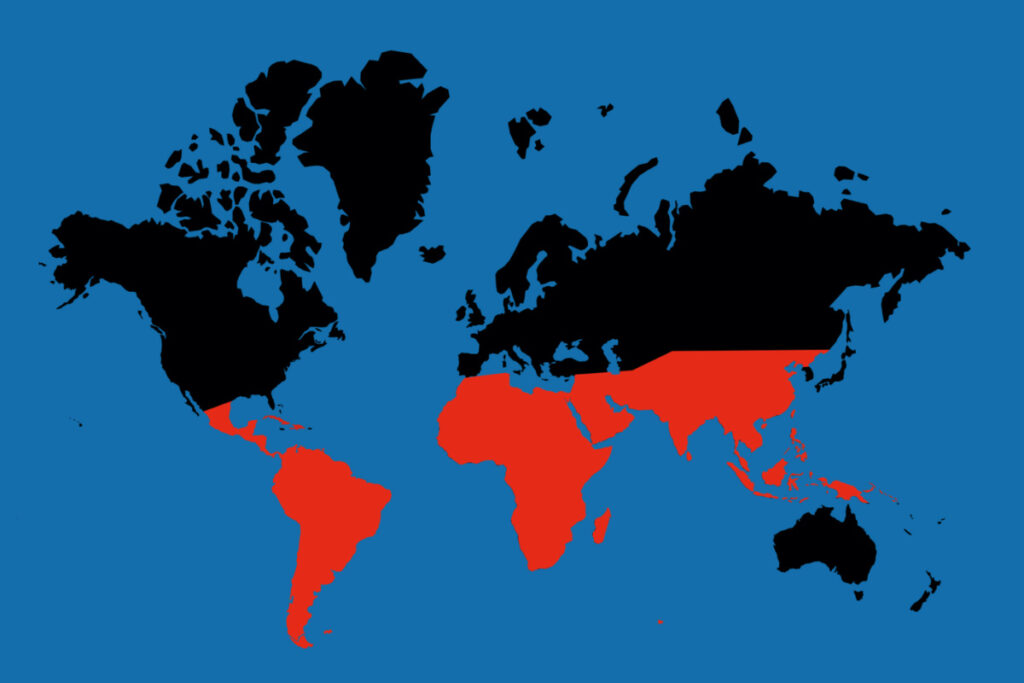How Postcolonialism Rewrites the Story of World Politics
For over a hundred years, the study of International Relations (IR) has been shaped by a handful of big ideas about how the world works. These ideas were developed in European and American universities, refined through the experiences of major powers, and exported globally as the standard vocabulary of global politics. They introduced concepts such as sovereignty, anarchy, intervention, development, and even peace. For many people working in business, governance, or international partnerships today, these ideas sit quietly in the background, shaping how organisations interpret global risk, competition, or cooperation. However, for an increasing number of thinkers, particularly in Africa and the wider Global South, there is a sense that this traditional view is incomplete. It describes the global order as if it arose naturally from European diplomacy, free markets, and the aftermath of two world wars. It depicts the West as the centre of the system, with the rest of the world as an extension to be governed, developed, or stabilised. This is where postcolonialism enters the stage. It is not just a critique, but a correction, a way of presenting a more complete story about how the world truly works. For business leaders, policy professionals, and everyone involved in making decisions in a global context, it offers tools to better understand power relations that traditional theories often overlook. We need to examine the central ideas of postcolonial thought, explain why it questions the foundations of mainstream international relations, and demonstrate why these insights are important well beyond the classroom. The Foundations of International Relations Were Built in an Imperial World To understand why postcolonial scholarship pushes back so strongly, we must start with how the discipline of international relations was born. It did not develop in a neutral global setting. Instead, it took shape during the height of empire. When early IR scholars wrote about international order, they often described it using language that suggested a self-contained European system: the rise of the modern state, diplomacy among great powers, and the balance of power that supposedly stabilised the continent. What these narratives quietly omitted was the wider context, the fact that European states also controlled vast overseas empires, extracted wealth, forced labour, and reshaped entire societies. Postcolonial scholars argue that this erasure is more than just a historical footnote. It influences how the discipline understands politics today. If the origins of global order are framed as European, peaceful, and orderly, then the violence and coercion that brought most of the world into that order are treated as peripheral, accidental, or irrelevant. This creates a problem for anyone trying to understand international business, development policy, or security dynamics. The world inherited from empire is deeply unequal, and those inequalities continue to influence markets, partnerships, and global governance. Ignoring that history or treating it as something outside the discipline, limits our understanding. Why Postcolonialism Challenges Conventional IR: The Core Claims Postcolonialism aims to reveal what is absent, concealed, or downplayed in mainstream approaches. Three themes constitute its core. 1. Conventional IR universalises Western experience. Traditional IR considers categories like “state behaviour”, “rational action” or “sovereignty” as universal. Postcolonial scholars argue these categories are not universal at all; they are historically specific to Western Europe and were disseminated through empire. This matters because it shapes which questions IR considers important. If Western experience becomes the standard, the rest of the world is judged based on its proximity to that model. States in Africa, Asia, and Latin America are described as “emerging”, “fragile”, “developing”, or “post-conflict”, while Western states are simply considered “normal”. The bias is subtle, but powerful. 2. Eurocentrism shapes narratives of peace, development and intervention. Postcolonialism argues that much of what is called “peacebuilding”, “democracy promotion” or “development assistance” relies on the assumption that Western models of institutions and governance are inherently superior. Even well-meaning interventions can reinforce hierarchies because they treat non-Western actors as objects of policy rather than as agents. This helps explain why large development programmes often face resistance or why some states push back against donor conditionalities. The issue is not just political; it is philosophical. People resent being seen as recipients of an imported model rather than as partners in shaping their own systems. 3. IR often separates today’s global politics from the violence that shaped it. For postcolonial scholars, the biggest problem with conventional IR is that it treats empire as a closed chapter. It analyses today’s conflicts or inequalities without acknowledging the historical processes that created them. In practical terms, this means: This separation makes it harder to explain why patterns of inequality persist. Postcolonial research, especially work that focuses on how empire structured global markets and political systems, reconnects the present to its historical roots. Why This Matters for Business and Policy At first glance, postcolonial theory may seem too abstract or philosophical for the practical realm of business strategy or development decision-making. But its insights have clear implications for how companies, governments, and multilateral organisations operate. 1. Markets are embedded in power. Investment flows, trade partnerships, and regulatory frameworks are often shaped by historical relationships. A company operating in Africa may find that certain sectors are dominated by external actors not because of efficiency but due to long-standing patterns of extraction. 2. Policy interventions require contextual legitimacy. Development programmes that fail often do so not because they are technically flawed, but because they do not align with local political histories. Postcolonial thinking warns policymakers about the danger of offering one-size-fits-all solutions. 3. Risk assessment changes when history is part of the equation. Political risk analysis usually concentrates on elections, conflict, and regulation. However, postcolonial perspectives emphasise deeper structural forces, such as resentment towards external influence or long-standing inequalities, which can alter outcomes. What Postcolonialism Adds to Our Understanding of Global Power 1. It makes visible what conventional IR overlooks. When mainstream theories describe international order through state-centric models, they often ignore the actors who bear the consequences of global decisions, such as workers in supply chains, communities affected by
How Postcolonialism Rewrites the Story of World Politics Read More »




